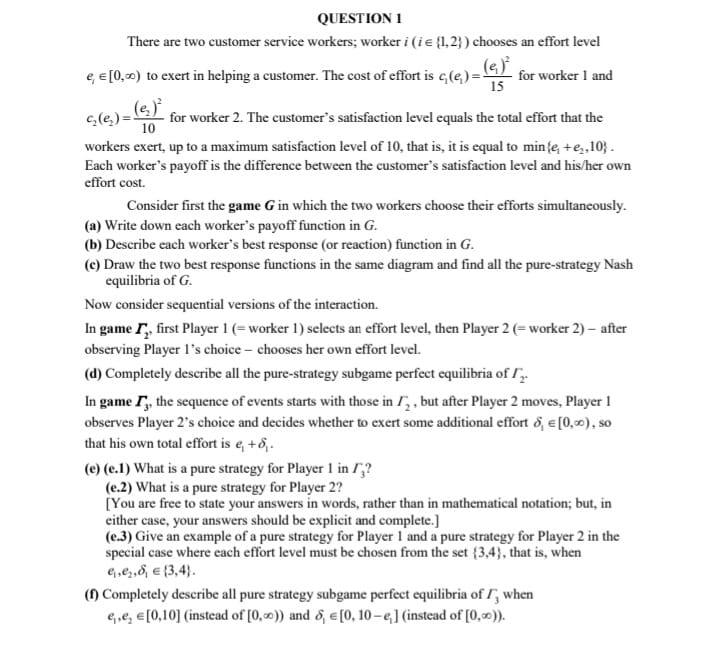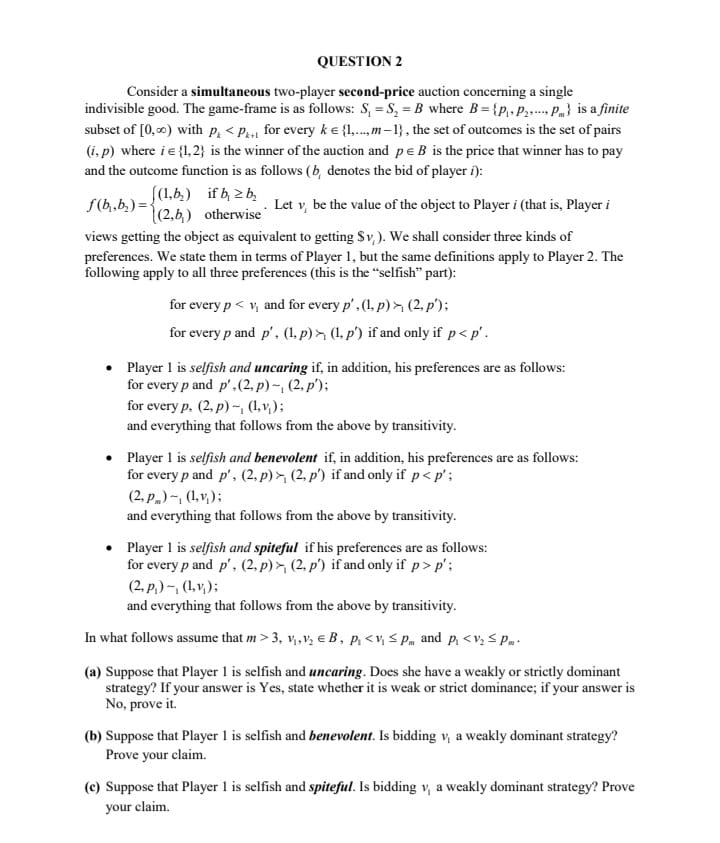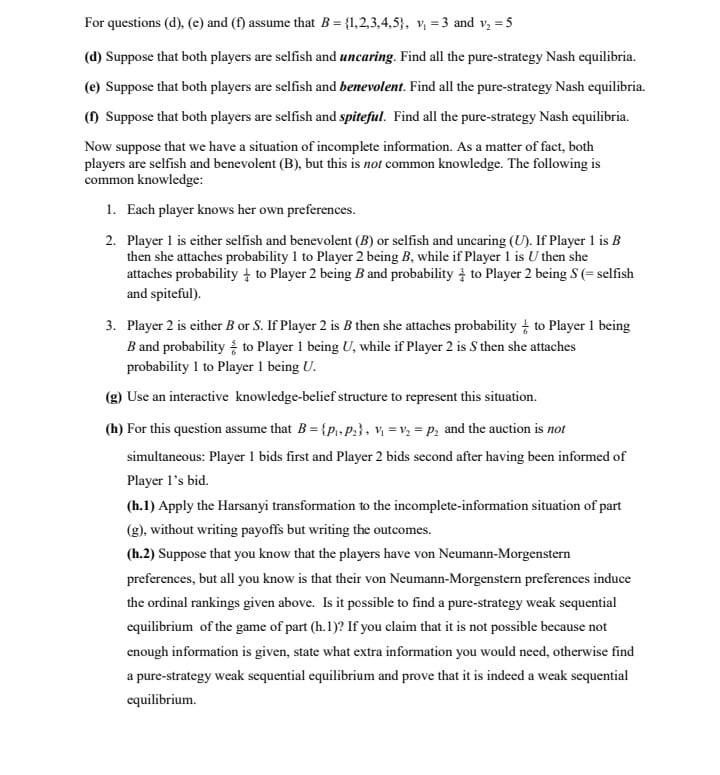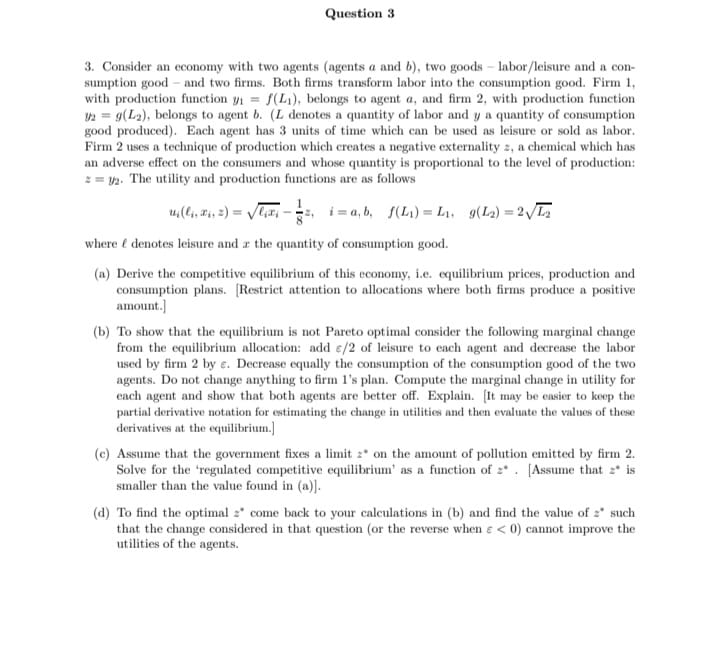



QUESTION 1 There are two customer service workers; worker / (fe (1,2) ) chooses an effort level e, e [0, co) to exert in helping a customer. The cost of effort is c(e) =) for worker I and 15 - for worker 2. The customer's satisfaction level equals the total effort that the 10 workers exert, up to a maximum satisfaction level of 10, that is, it is equal to minfe te,,10). Each worker's payoff is the difference between the customer's satisfaction level and his/her own effort cost. Consider first the game G in which the two workers choose their efforts simultaneously. (a) Write down each worker's payoff function in G. (b) Describe each worker's best response (or reaction) function in G. (c) Draw the two best response functions in the same diagram and find all the pure-strategy Nash equilibria of G. Now consider sequential versions of the interaction. In game I, first Player 1 (= worker 1) selects an effort level, then Player 2 (= worker 2) - after observing Player 1's choice - chooses her own effort level. (d) Completely describe all the pure-strategy subgame perfect equilibria of Iy In game Iy, the sequence of events starts with those in /, , but after Player 2 moves, Player 1 observes Player 2's choice and decides whether to exert some additional effort o, = [0,co), so that his own total effort is e, +6,. (e) (e.1) What is a pure strategy for Player 1 in /}? (e.2) What is a pure strategy for Player 2? [ You are free to state your answers in words, rather than in mathematical notation; but, in either case, your answers should be explicit and complete.] (e.3) Give an example of a pure strategy for Player 1 and a pure strategy for Player 2 in the special case where each effort level must be chosen from the set (3,4), that is, when e.en.6, E (3,4). (f) Completely describe all pure strategy subgame perfect equilibria of /, when Gne, [0,10] (instead of [0, co)) and 5, [0, 10-e, ] (instead of [0,0)).QUESTION 2 Consider a simultaneous two-player second-price auction concerning a single indivisible good. The game-frame is as follows: S, = S, = B where B= (p, p,,.... P.,) is a finite subset of [0,co) with p. , (2, p'); for every p and p' , (1, p) >, (1, p') if and only if p (2, p') if and only if p (2. p') if and only if p > p'; (2, p.) -, (1,v); and everything that follows from the above by transitivity. In what follows assume that m > 3, v,,V, EB, p,














